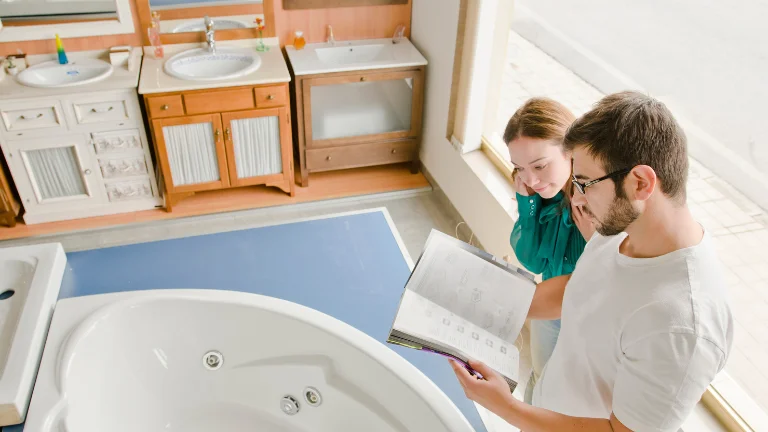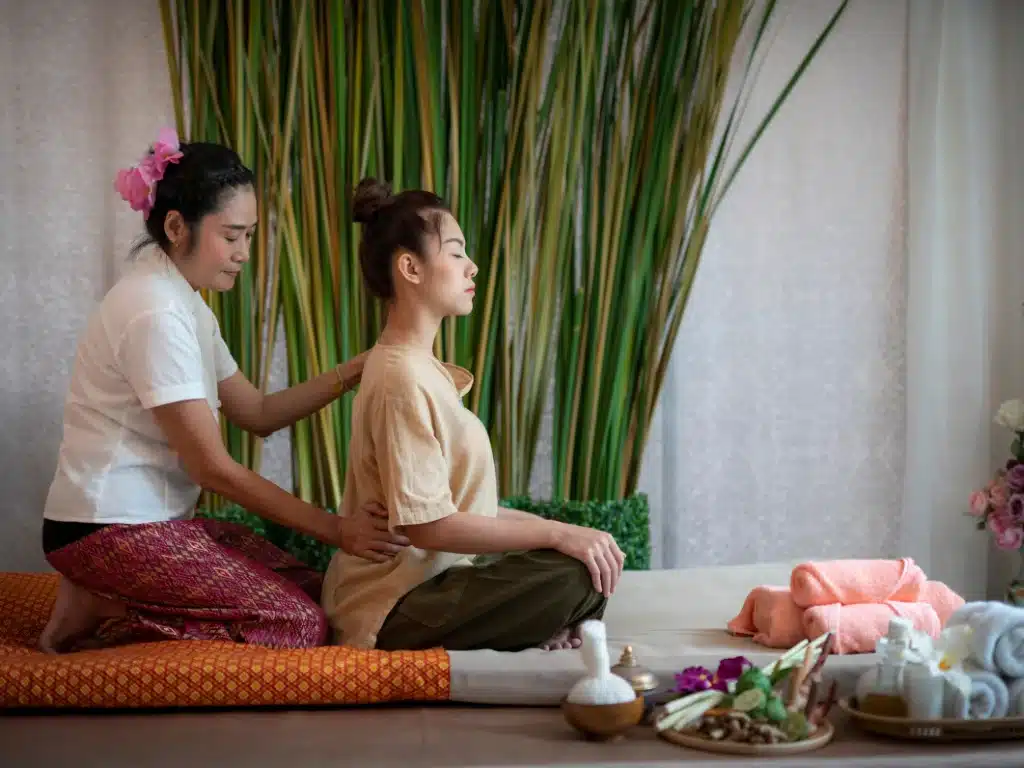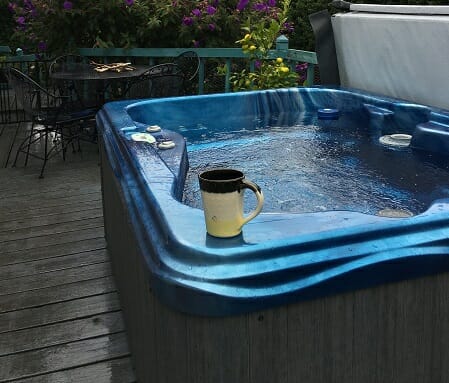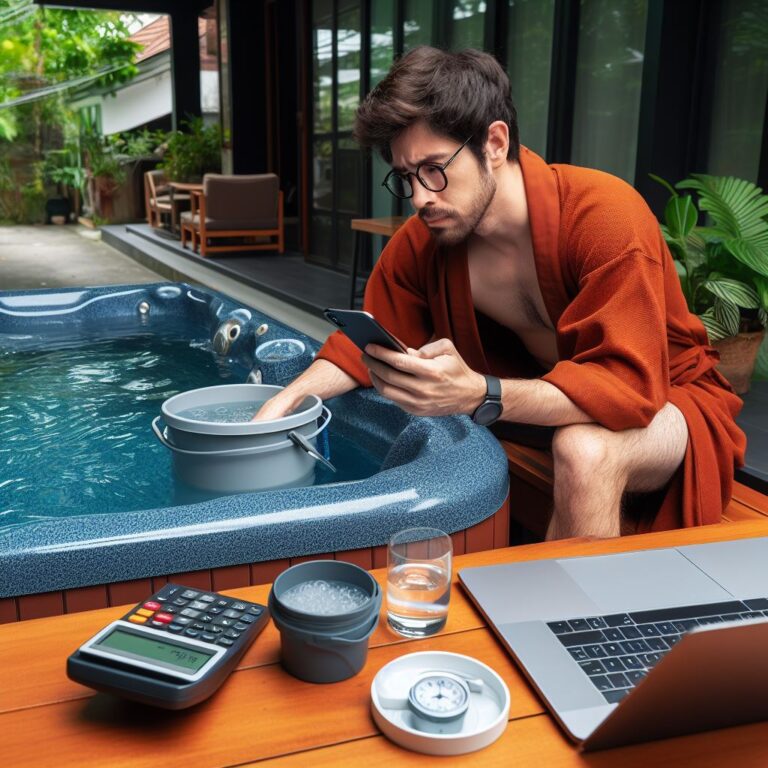Swedish vs Thai Massage: Key Benefits, Differences & How to Choose
Swedish massage uses gentle, oil‑based strokes to relax muscles, improve circulation, and reduce stress. Thai massage combines deep pressure with assisted stretching to boost flexibility, ease tension, and restore energy.
Choose Swedish for calming relief, or Thai for an invigorating, mobility‑focused session, depending on whether you want pure relaxation or active body rejuvenation.
Swedish Massage vs. Thai Massage
Do you know that massages can make you feel perfect? But did you also know that different types of massages offer additional benefits? Two of the most popular types of massages are Swedish massage and Thai massage. This article will explain what they are, how they differ, and which might be best for you.
What is a Swedish massage?

A Swedish massage is a type of massage that involves using oils, lotions, or creams to relax the muscles. During a Swedish massage, the therapist will use long strokes, kneading, deep, circular movements, vibration, and tapping on the topmost layers of muscles.
This type of massage is known for its relaxing effects and is usually recommended for people who want to reduce stress and improve relaxation.
What is a Thai massage?
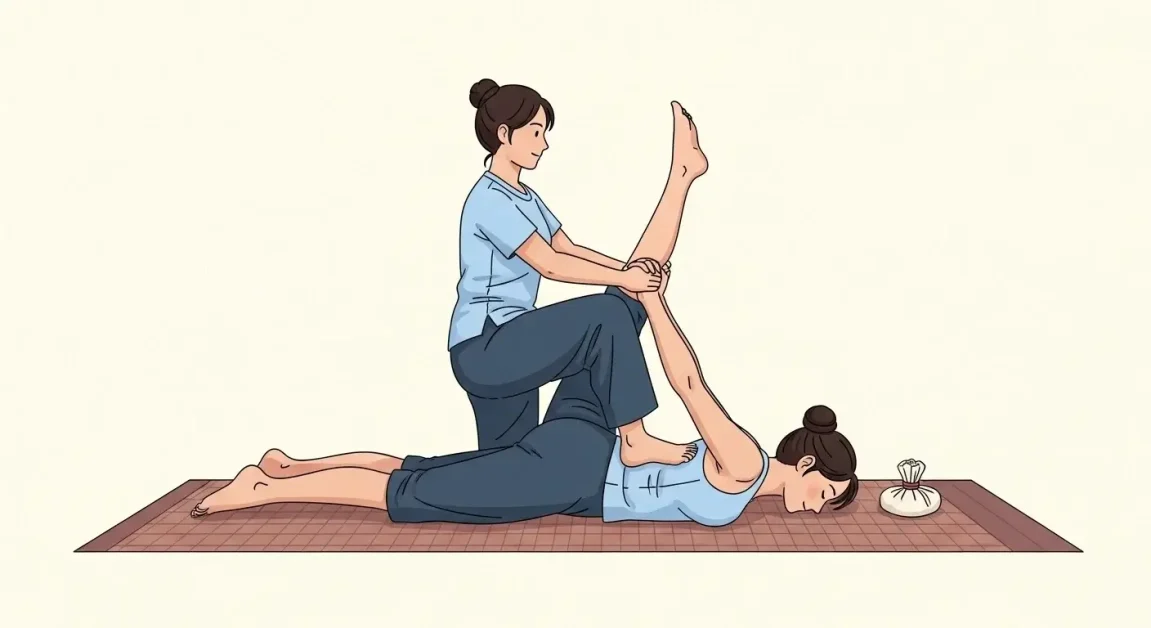
A Thai massage is a type of massage that originated in Thailand. It involves stretching and deep massage to increase flexibility and relieve muscle and joint tension. During a Thai massage, the therapist will use their hands, knees, legs, and feet to move the body into various yoga-like positions.
This type of massage is known for its energizing effects and is usually recommended for people who want to improve flexibility and reduce muscle pain.
Best Massage Choice by Goal (%)
The Origins of Swedish and Thai Massage
Massage therapy has been around for thousands of years, but these two techniques come from very different worlds.
- Swedish Massage — Developed in the early 1800s by Per Henrik Ling, a Swedish physiologist and fencing master. Ling combined medical gymnastics with manual therapy to create what’s now known as Swedish massage, according to the American Massage Therapy Association. Today, it’s estimated that over 80% of massage sessions in the US incorporate Swedish techniques in some form.
- Thai Massage — Traces its roots back over 2,500 years to Ayurvedic medicine in India. It was later refined in Thailand, primarily by Buddhist monks, as part of traditional healing rituals. UNESCO even recognized Traditional Thai Massage as an Intangible Cultural Heritage in 2019.
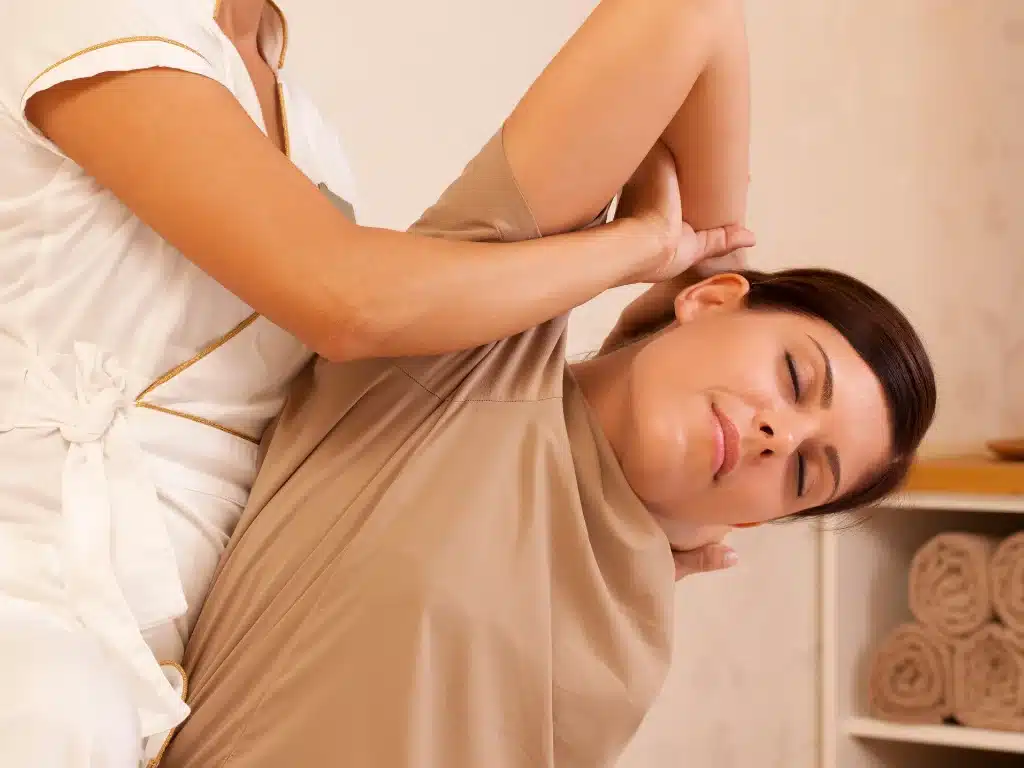
Swedish Massage Technique
Swedish massage is often the go‑to style for relaxation, recovery, and improved circulation. It’s built on five classic strokes developed in the early 1800s, each with a specific purpose, plus the option of targeted deep pressure for stubborn tension.
Together, they create a sequence that can relax the body, boost blood flow by up to 50% in localized areas, and even support lymphatic drainage.
Basic strokes used in Swedish massage:
| Stroke | How It’s Done | Main Benefit |
|---|---|---|
| Effleurage | Long, gliding strokes using palms or forearms, often at the start and end of the session | Warms up muscles, promotes relaxation, encourages blood & lymph flow |
| Petrissage | Kneading, rolling, and lifting the muscles between the hands | Releases deep muscle tension, improves elasticity |
| Friction | Small, firm, circular or cross‑fiber movements with thumbs or fingertips | Breaks down knots/adhesions, stimulates tissue repair |
| Tapotement | Light rhythmic tapping with cupped hands, fingers, or the edge of the hand | Invigorates muscles, awakens the nervous system |
| Vibration | Rapid shaking or trembling with fingertips or palms | Loosens tight muscles, promotes deep relaxation |
| Deep Pressure | Sustained, targeted pressure using hands, knuckles, elbows, or forearms | Relieves chronic tension in specific trigger points |
Pro tip: Many therapists adjust the sequence and pressure based on your needs. Athletes may get longer friction work, while desk workers might benefit more from petrissage and deep pressure in the shoulders.
Thai Massage Technique
Thai massage is often described as “lazy man’s yoga” because it blends passive stretching, acupressure, and deep tissue work in a single session. Practiced for over 2,500 years, it draws from ancient Ayurvedic medicine and was refined in Buddhist temples as part of traditional healing.
UNESCO recognized Traditional Thai Massage as an Intangible Cultural Heritage in 2019
Instead of lying on a table with oils, you’ll be on a floor mat, fully clothed, while the therapist uses hands, thumbs, elbows, knees, and even feet to guide your body through a sequence of movements.
A typical session lasts 60 to 120 minutes and can improve flexibility, enhance circulation, and help release energy blockages along the body’s “sen” lines thought to be similar to meridians in Chinese medicine.
Techniques used in Thai massage:
| Technique | How It’s Done | Main Purpose |
|---|---|---|
| Passive Stretching | Therapist moves your body into yoga‑like poses without you engaging muscles | Increases flexibility, relieves stiffness |
| Compression | Steady pressure with palms or thumbs along muscles | Improves circulation, warms tissues |
| Acupressure | Targeted pressure on energy points along “sen” lines | Balances energy flow, eases tension |
| Rocking & Shaking | Gentle rhythmic rocking or shaking of limbs or torso | Releases muscle tension, promotes relaxation |
| Muscle Compression | Deep, sustained pressure using hands, elbows, or knees | Loosens knots, reduces chronic tightness |
| Joint Mobilization | Gentle movement of joints through full range of motion | Improves mobility, reduces stiffness |
| Reflexology | Pressure applied to specific points on the feet or hands | Supports overall wellness through nerve stimulation |
Recommended Massage by Goal
Differences in Technique
| Technique | How It’s Done | Main Benefit |
|---|---|---|
| Passive Stretching | Therapist moves you into yoga‑like positions without muscle effort from you | Improves flexibility, reduces stiffness |
| Compression | Gentle to firm palm or thumb pressure along muscle lines | Increases blood flow, warms muscles |
| Acupressure | Targeted pressure on “sen” energy lines | Balances energy flow, relieves tension |
| Rocking & Shaking | Gentle rhythmic movement of limbs or torso | Releases tension, deep relaxation |
| Muscle Compression | Sustained deep pressure on specific muscles with elbows, knees, or palms | Breaks down knots, eases chronic tightness |
| Joint Mobilization | Moving joints through full range of motion | Improves mobility, reduces stiffness |
| Reflexology | Focused pressure on feet or hands | Stimulates nerves, supports whole‑body wellness |
The Benefits of Swedish Massage
What is a Swedish massage? Uses oils, lotions, or creams on bare skin to deliver long, flowing strokes, kneading, gentle tapping, and circular motions over muscles. Known for reducing stress, calming the mind, and easing surface‑level muscle tension.
What is a Thai massage? Done fully clothed on a padded floor mat, blending yoga‑like assisted stretches, deep pressure, and rhythmic movements. Aims to increase flexibility, release joint tension, and restore energy flow.
| Feature | Swedish Massage | Thai Massage |
|---|---|---|
| Surface | Massage table | Mat on floor |
| Clothing | Undress to comfort level | Loose, comfortable clothes |
| Technique | Oils, long strokes, kneading | Stretches, deep pressure, acupressure |
| Best for | Relaxation, stress relief | Flexibility, mobility, energy boost |
Related Article: full body massage
🛋 Best for Relaxation
Swedish Massage – Long, flowing strokes with gentle pressure help lower heart rate and calm the nervous system. Many clients say it feels like a full‑body reset.
💪 Best for Pain Relief
Thai Massage – Combines deep pressure and targeted stretches to ease muscle knots, improve joint movement, and reduce post‑workout soreness.
🤸 Best for Flexibility
Thai Massage – Assisted, yoga‑style stretches lengthen muscles and improve range of motion. Great for athletes and desk workers alike.
😌 Best for Stress Relief
Swedish Massage – Gentle, rhythmic motions can cut stress hormone levels by up to 30% while boosting mood‑lifting endorphins.
🏃 Best for Sports Recovery
Thai Massage – Boosts circulation, reduces inflammation, and helps muscles recover faster after training or competition.
| Goal | Recommended Massage | Why It Works |
|---|---|---|
| Relaxation | Swedish | Gentle strokes calm the body and mind |
| Pain Relief | Thai | Deep pressure + stretches release tightness |
| Flexibility | Thai | Yoga‑like moves increase mobility |
| Stress Relief | Swedish | Lowers cortisol, boosts endorphins |
| Sports Recovery | Thai | Improves circulation, speeds healing |
To access additional articles related to ‘Hot Tub Patio‘ or to read more posts related to this topic, please visit the Massage category.

